
15 minute read
Art
Art EVENT
Red Oak, Blue Pony, Studio S Open for Art Studio Tour Nov. 21–22
Advertisement

ALTHOUGH PARTICIPATING LOCATIONS will be down from last year, the tradition of the Art Studio Tour will continue in 2020.
The Stones River Crafts Association has presented the tour every year since 1993, and the annual Art Studio Tour gives visitors a glimpse into the working studios of local artisans and craftsmen of various disciplines.
Blue Pony Art Studio, Red Oak Pottery and Studio S Pottery will all open their home studios to the public Nov. 21–22 for the 2020 Art Studio Tour.
Blue Pony, 88 Hoyt Knox Rd., Readyville, features clay sculpture from Kay Currie, as well as work from guest artists James Adkins (woodworking) and Kathy Bradley (jewelry).
Red Oak Pottery, 2925 Spain Hill Rd., Lascassas, features the ceramic stoneware of Bill and Judy Heim, as well as work from Anne Rob (handcrafted jewelry) and Jan Quarles (dyed silk).
Studio S, 1426 Avon Rd., Murfreesboro, features stoneware, porcelain and raku from Lewis and Eric Snyder, as well as work from guest artists Mary Veazie (painting) and Phyllis Razo (watercolors).
Drop by these three locations Saturday and Sunday, Nov. 21–22, from 10 a.m.–5 p.m. to view the artwork and meet the artists. Studio S will also open its doors on Friday, Nov. 20. Popcorn Studio Pottery, Hickerson Woodworks, Turtleware Pottery, Chimes for Justice and Acorn Haven will all host visitors that weekend by appointment. Call each of those locations individually to set up a time to visit.
Popcorn Studio Pottery – 615-896-9167
Hickerson Woodworks – 615-896-0919
Turtleware Pottery – 615-904-9850
Chimes for Justice – 615-491-5482
Acorn Haven – 615-631-9895
For more information on the Art Studio Tour, email artstudiotour@gmail.com or visit artstudiotour.org.


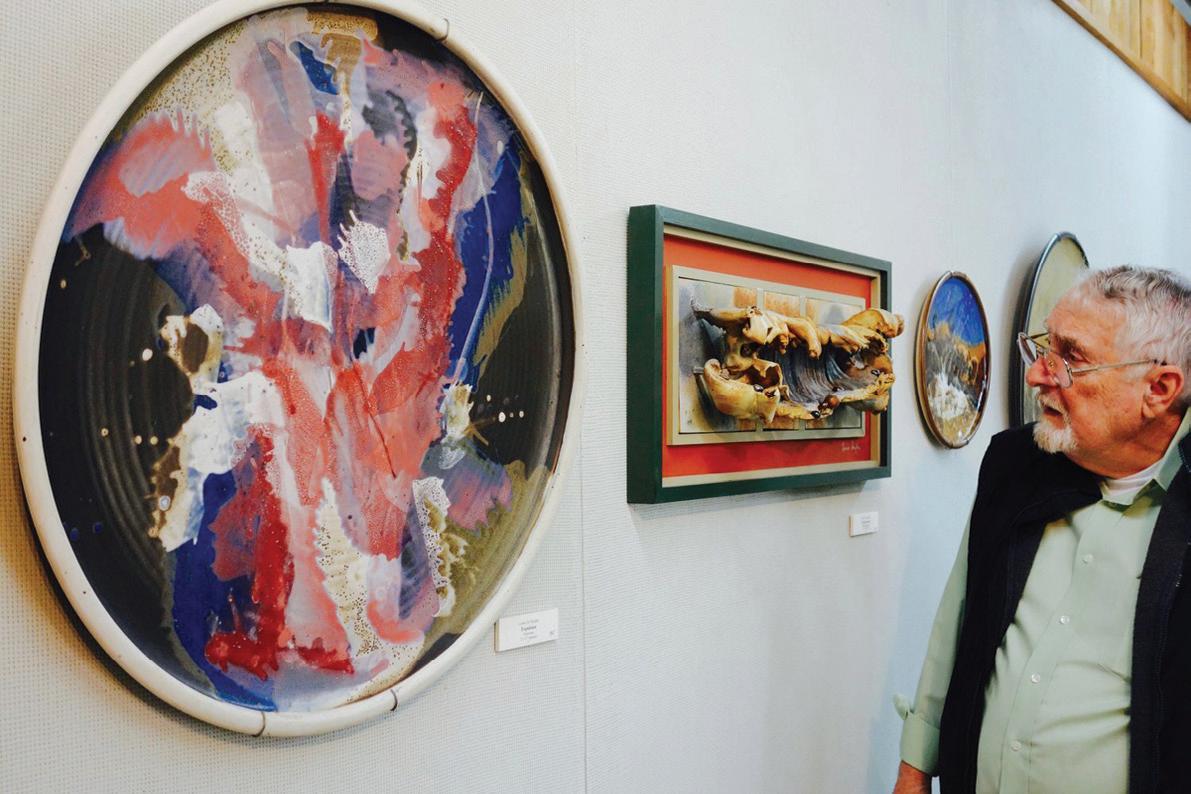


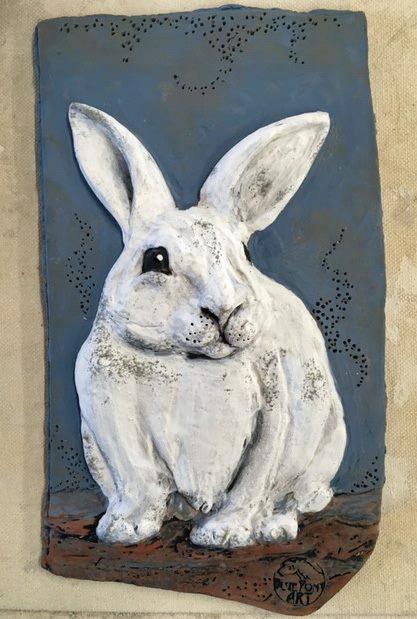



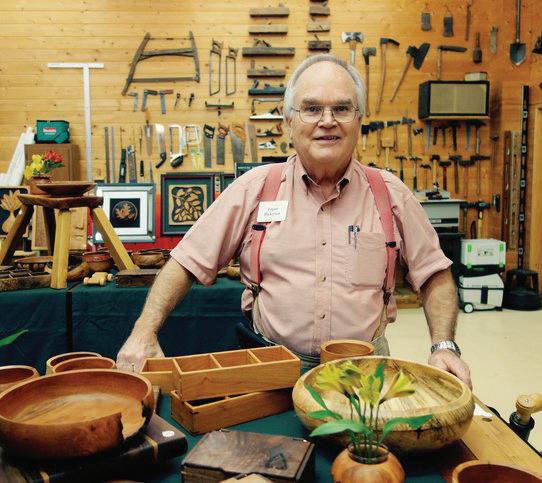

Clockwise from top left: Bill Heim, Red Oak Pottery Lewis Snyder, Studio S Logan Hickerson, Hickerson Woodworks Sculptures by Kay Currie, Blue Pony
Art EXHIBIT
Leroy and Barbara Hodges Curate Collective Memories, Words to Live By Dual Exhibit

THE MTSU DEPARTMENT OF ART AND DESIGN will host a duo of collaborative exhibits curated by Dr. Barbara and Mr. Leroy Hodges entitled Collective Memories: Creative Expressions Through Contemporary Art and Words to Live By. Scheduled to remain on display through Nov. 21 in the Todd Art Gallery, the exhibits share the main gallery and fi nish the department’s fall exhibition calendar.
“Collective memory spans nations, cultures and generations,” Leroy Hodges said when asked to describe the Collective Memories effort. “This collaboration brings together sculptures, paintings and works on paper by local, regional and national artists embracing and showcasing their creative expressions of collective memories through contemporary art.”
He aims for the viewer to see artwork that tells stories spanning personal and cultural memories that are open to interpretation, then to reorient the past, not as a fi xed narrative but as a multiplicity of voices from differing viewpoints. Works in the exhibit range from a vibrancy of color, subtle abstraction, a gamut of textures, provocative images, mixed media, surrealism, fi gurative and layered landscapes.
Words to Live By showcases the artistry found from a broad spectrum of senior adults, veterans and community youth. The work conveys the creatively and visually expressive interpretations of how words, phrases, quotes and sayings signifi cantly infl uenced their lives. Exploring the transformative nature “Unthinkable” by Jason Watkins of words, this group of art gives a voice to the voiceless intending to inspire, engage, educate and empower each viewer. These words and art span nations, communities, cultures, and generations, establishing a relationship between the companion exhibits.
“We hope these art exhibits give a voice to those who desire to be boundless by words,” Hodges said.
Participating artists include Michael McBride, James Threalkill, Dayo Johnson, Diane Stockard, Carlton Wilkinson, Lakesha Moore, Lisa Sims, Leroy Hodges, Barbara Hodges, Lloyd DeBerry, Roger Smith, Henry Jones, DeeDee Potter, Destiney Powell, Mary Watkins, Jamaal Sheats, Jennifer McGuire, LaRonda Angelisa, Ginny Toygre, George Nock, Walter Pope, Michael Mucker, Thaxton Waters, Suzanne LeBeau, Robert Orr Jr., Xavier Payne, Daniel Arite, Donna Mag, Heliose Shiltat, Elisheba Israel, Omar Booker and Robert Miranda.
Admission to the Todd Art Gallery is free and the venue is open to the public Monday–Friday, 8:30 a.m.–4:30 p.m., and Saturday, 11 a.m.–4 p.m. For parking, directions or other questions, contact 615-898-5532 or eric.snyder@mtsu.edu.
AUCTION
(Above) “Louis” and (below) “Hendrix” by Berkeley Clements
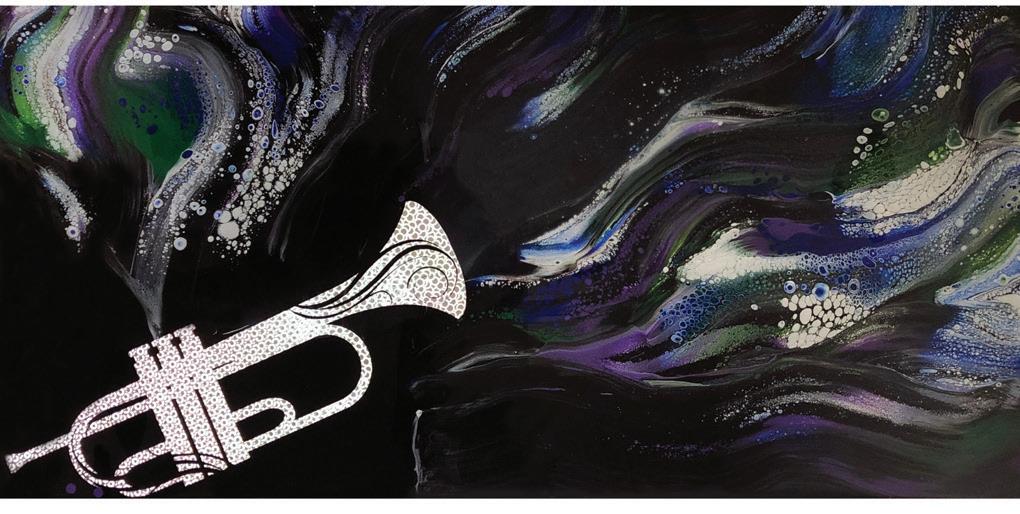

Walnut House Hosts Art Auction in November




IN AN EFFORT TO SUPPORT the Middle Tennessee art community, The Walnut House will present a virtual art show and auction kicking off at 8:30 p.m. on Thursday, Nov. 19, and concluding at 8:30 p.m. on Friday, Nov. 20. Among the artists showing and selling work in the project, Berkeley Clements will offer two of her musician-inspired, mixedmedia works in her Color of Sound series. Clements said the concept for this series initially came to her in a dream. The fi rst work, a depiction of a Fender Stratocaster guitar, drew inspiration from one of the most legendary guitar players who ever lived, Jimi Hendrix. The painting symbolizes the iconic 1967 moment when Hendrix set his guitar on fi re during the Monterey Pop Festival. The lyrics from “Purple Haze” are also woven within the work, but are only visible using a UV-reactive black light. “This subtle element signifi es that notes on a page and paint on a canvas mean so much more than what is initially seen and heard,” Clements said. When deciding on the second painting for the Color of Sound series, she gravitated to Louis Armstrong. The lyrics from “What a Wonderful World” kept playing inside her head as she dreamed of a better world in the future to come. This piece contains hidden lyrics of that classic song, often covered but best remembered in Armstrong’s 1967 recording.
“Sunfl owers” by Both of these vivid, detailed and capJustyna Kostkowska tivating pieces measure 48 inches by 24 inches.
Tune into the virtual art show and auction at charityauctionstoday.com or at the Facebook page for The Walnut House.
Poet Tells Story of Military Family in 2001 with The Places We Sleep


IT’S EARLY SEPTEMBER 2001, and 12-year-old Abbey is the new kid at school— again. Tennessee is the latest stop her family has made in a series of moves, thanks to her dad’s work in the Army, but this one might be different. For the fi rst time, Abbey has found a real friend: loyal, courageous, athletic Camille.
But everything changes after Sept. 11. Abbey’s “home” looks like it might fall apart as America changes overnight. Abbey’s body changes, too, while her classmates argue and her family falters amidst the pressures of a new national crisis. Like everyone around her, she tries to make sense of her own experience as a part of the country’s collective pain. With her mother grieving and her father prepping for active duty, Abbey must learn to cope.
Written in narrative verse, The Places We Sleep by Caroline Brooks DuBois, released


earlier in 2020 from Holiday House Books, tells the story of Abbey’s journey and provides a portrait of the military family experience during a tumultuous period in our history.
DuBois, who spent her childhood in Murfreesboro and graduated from Riverdale High School, is the daughter of two former local educators. “My dad was the speech and debate chair at MTSU and my mom worked most of her teaching career in Rutherford County public schools,” she said. After high school, the author attended Converse College in South Carolina and later received a master’s degree in poetry at the University of Massachusetts, Amherst. DuBois currently lives in Nashville, where she has taught poetry workshops, writing classes and English at the middle school, high school and college levels.
She wrote The Places We Sleep to be both personal and universal, a sensitive comingof-age novel for poetry fans of all ages.
Did it actually happen? Did buildings really fall? Or was it just a scene from a movie I once saw?
Without witnessing something fi rsthand, it’s hard to believe in it after a while— the way it’s hard to believe that someone you know is no longer living, breathing, and being.
But if buildings as grand as those can just vanish . . . it must be so.
The book continues to recount the main character’s challenges at school and her longing for her father to return “back to the place where we all sleep.”
What was the inspiration behind The Places We Sleep and what drew you to writing it in verse? CAROLINE BROOKS DUBOIS: Pregnant when 9/11 occurred, I feared bringing a child into such a frightening and unpredictable world. In the years that followed, my brothers and my brother-in-law were all called into active duty and deployed to Afghanistan and Iraq. These events inspired Abbey’s story. I wanted to write about how world events have rippling effects on individuals and familial relationships in unexpected ways. Abbey’s coming of age story unfolded naturally in poetry, perhaps as a lyrical way to process 9/11, but also likely because I’d recently completed my MFA in poetry.
What was your experience of Sept. 11, 2001? I was working as an editor for a company in the South. The news rippled through our offi ce, as we all had family and friends in the affected cities. Like JFK’s assassination for my parents, the Challenger explosion during my youth, 9/11 was one of those impact moments that you cannot forget, one of those moments where people can typically tell you exactly where they were when it happened and what they were doing.
How are children particularly impacted by national trauma? The current national trauma of the Coronavirus pandemic may have a similar impact on youth. Children are impacted by trauma in ways adults cannot always understand; therefore, reading stories about such traumas can help children process such events. Why do you think this story is important for the middle grade audience? Middle grade students I’ve taught often have had only a fuzzy understanding of the events of 9/11, and the nonfi ction texts they’ve typically enjoyed the most in my classroom were almost always couched in a narrative story. I hope Abbey’s story will spark curiosity in young readers about 9/11 and the monumental lessons we learned and are still learning from that tragedy. Maybe it will even inspire some young reader to choose to deal with life’s challenges through art or poetry or other forms of creativity.
What was your journey to becoming published like? Do you have any advice for other aspiring novelists? I won’t sugarcoat it—my journey to publishing this novel was arduous and fi lled with more than one agent and my share of rejections, defi nitely not an instant success story aspiring writers might crave to hear. Fortunately it was dotted with minor accomplishments along the path to keep me going. Publishing is like training for a marathon in endurance and perseverance, and I’ve been collecting writing knowledge for years from attending conferences, maintaining critique groups, teaching adolescents, reading literature for children, and by returning day after day to the blank page to chase a story or poem. My advice is know your audience by interacting with them, and then tell the stories that your heart demands that you tell. Also, learn to wear and enjoy wearing many hats—writer, reviser, learner, reader, promoter, and so forth.
What is the writing process like for a novel in verse? Writing a novel in verse is a unique experience in that each poem can act as a scene or a portion of a scene, like the bones of a novel. A distinction from the traditional prose novel is that there are a lot less connective tissues to string scenes together. Therefore, the writer has to consider how the narrative will develop, while ensuring the language is precise and intentional in word choice, connotation and imagery. At its best, a story poem is a picture painted with words that also reveals character and develops plot. Books in verse create more white space between scenes as well as playful or dramatic visual messages with syntax, punctuation and form.
The Places We Sleep by Caroline Brooks DuBois is available at amazon.com, barnesandnoble.com and other retailers.
How Bulimia Saved My Soul
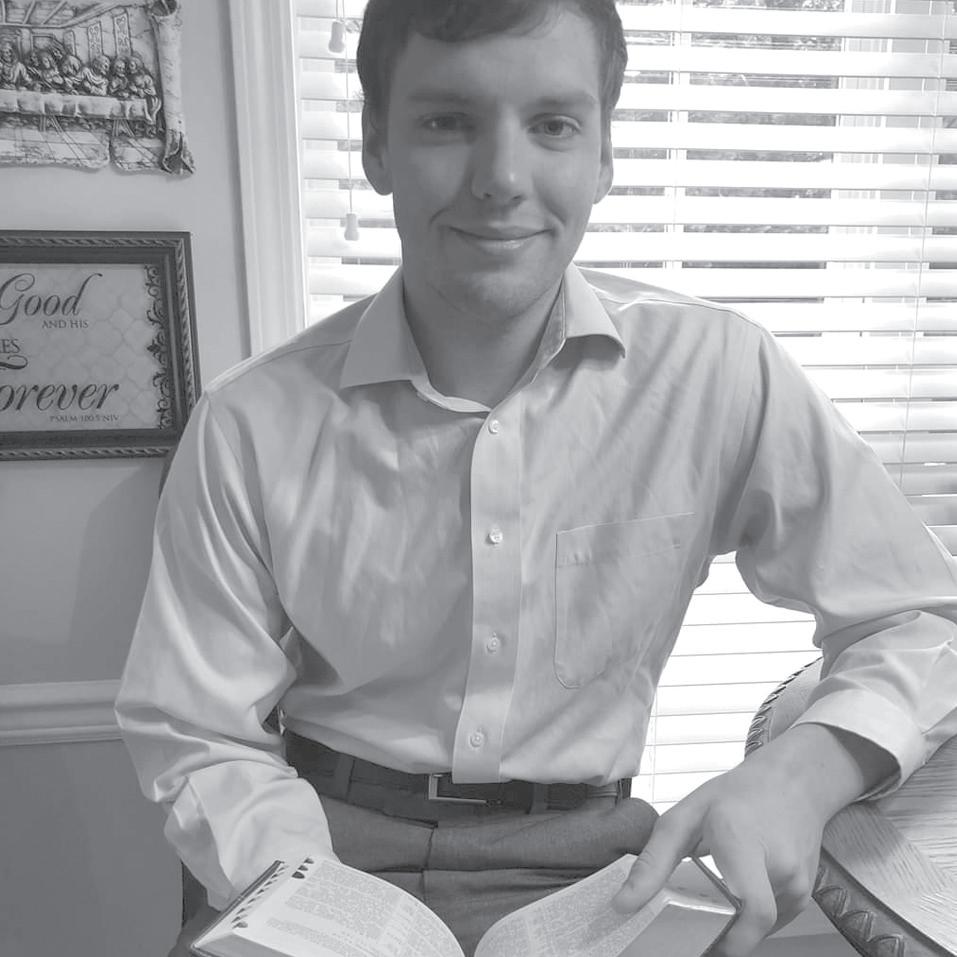
Local young author fi ghts the good fi ght of faith and wins, releases compelling account
BY ANGELA LOUPE
LIFE CAN BE TRICKY.
There are curves and turns in the road, as well as detours and pitfalls. It often feels more like a roller coaster than a path. Because we can all relate to the struggle in one form or another, stories of tragedy and triumph abound.
While today’s youth face unique obstacles that no previous generation has encountered, the resulting coping mechanisms continue to remain centered on the familiar and deceptive illusions of perceived control. Whether the imbalance manifests in the form of alcoholism, drug abuse, eating disorders, addiction or other behaviors, there is often a search to maintain equilibrium. Disorders have a way of emerging despite efforts of resistance. One defense against these self-destructive tendencies is fi nding a way to be in harmony with ourselves, thereby alleviating the tension.
One such story has unfolded in the life of a local young man. Like Paul, the champion of the post-resurrection New Testament, Welland Andrus gives the appearance of a boisterous and spirited young man in print. However, upon meeting him, he comes across as a reserved young man, humble in spirit and ready to share his testimony with excitement, but also with due restraint.
Andrus recently released a book, How Bulimia Saved My Soul. Many have typically identifi ed bulimia as a primarily female disorder. However, this young man has recorded his struggles with bulimia in a very honest and compelling book that chronicles his life through the eyes of a fi ctional character named Larry. Andrus writes with the kind of raw emotion and candid verbiage that one can only associate with true experience. While the names have been changed and some events have been changed up, Practically the entire book is a refl ection of his own life and struggles, said Andrus, who has changed names and identifying details of certain events for the sake of anonymity on behalf of the other characters involved.
In How Bulimia Saved my Soul, Andrus conveys a sense of his internal struggle on a very tangible and personal level. This book shares his most intimate thoughts, his most private ponderings, his most tragic experience-turned-triumphant, and how his Christian faith delivered him through it all. Andrus details the toll the disorder takes on his own body and the bodies of fellow sufferers, and the often-forgotten toll on the family and friends who are indirectly affected by the struggle.
When asked to simplify the root of the problem in his own words, Andrus opened up about the issues he struggled with in his home life—from losing a parent at a young age to watching the remaining parent struggle with substance abuse—and how that impacted him, leaving him feeling out of control.
“I couldn’t control my home life, but I could control my weight, so I fell back on


that,” he said. “For me it was always about wanting control. But really, when I got into treatment, I saw it was just a lie I fell for because I didn’t have control over the situation. I thought I did, but I didn’t.”
He goes on to say that he was essentially using food as a coping mechanism.
“One thing I really saw in treatment was, it’s okay sometimes to not have control over a situation. That’s one part about the Christian faith. It’s not about control, it’s about surrender,” the 21-year-old author said.
Andrus’ account highlights each crucial moment as his life spins out of control, and what steps were necessary to get back on the right path. He does this with a raw writing style, an ability to keep the suspense coming and a skilled delivery of a delicate subject. I would go as far as to call it a must-read for anyone who identifi es with bulimia, either as a sufferer or as a loved one. The insight gained may truly help save a life and heal a heart.
The book gives a true picture of what the struggle looks like, the resulting consequences, and the comforting truth that we are never alone in our struggles.
If you or someone you know is struggling with bulimia, you can reach out for help in a number of ways, from local churches and nonprofi t organizations to counselors and crisis intervention centers as well as rehabilitation centers. Take action and get the help you deserve. Your life is worth it.
Find How Bulimia Saved My Soul at Barnes & Noble, Amazon and various other outlets.








